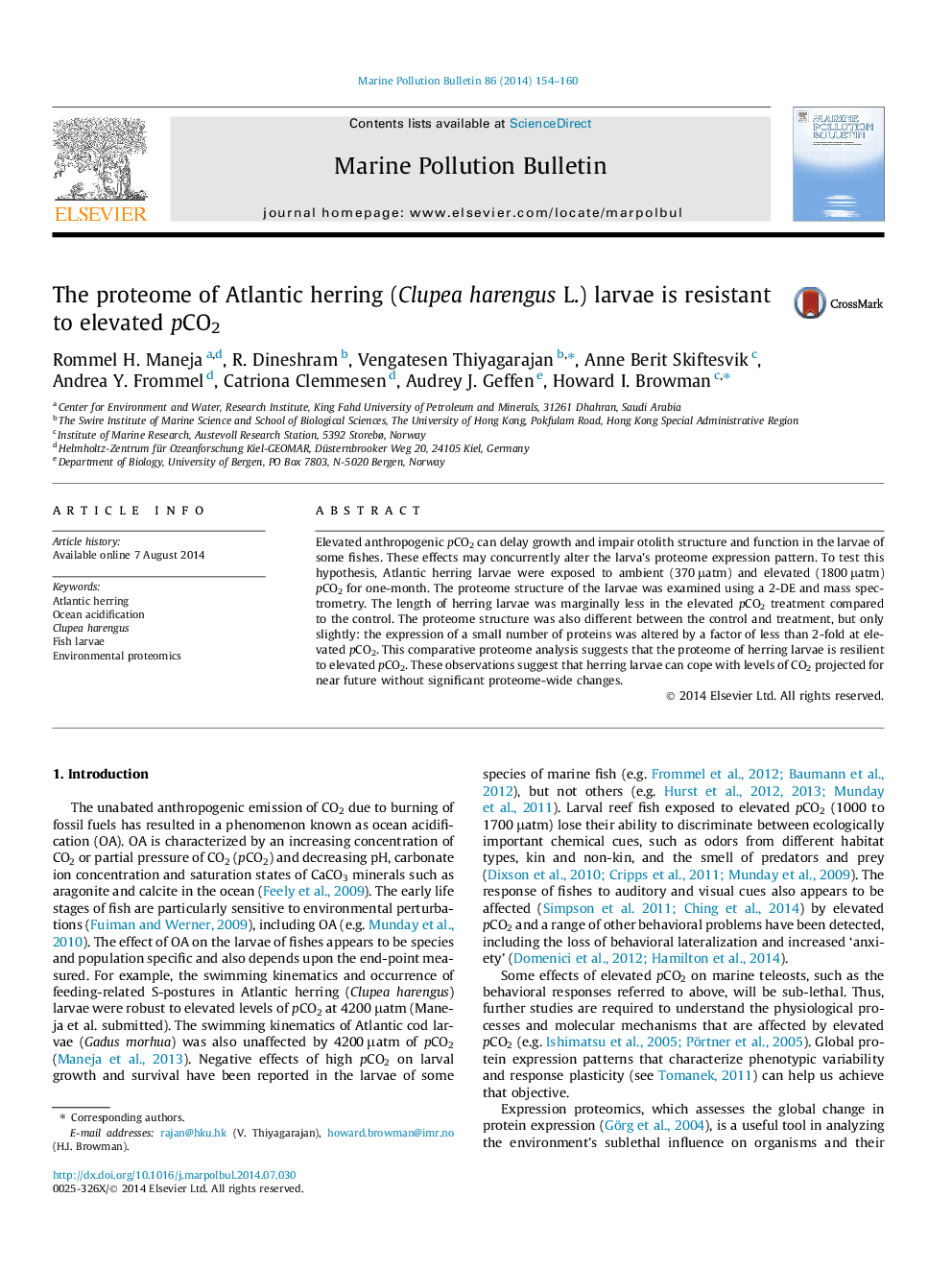| Article ID | Journal | Published Year | Pages | File Type |
|---|---|---|---|---|
| 6357723 | Marine Pollution Bulletin | 2014 | 7 Pages |
â¢2-DE proteomics analysis revealed the Atlantic herring larval proteome.â¢Herring larval proteome was largely unaltered at elevated pCO2 of 1800 μ atm.â¢Acclimation to ocean acidification in herring larval fish occurs without significant proteome change.
Elevated anthropogenic pCO2 can delay growth and impair otolith structure and function in the larvae of some fishes. These effects may concurrently alter the larva's proteome expression pattern. To test this hypothesis, Atlantic herring larvae were exposed to ambient (370 μatm) and elevated (1800 μatm) pCO2 for one-month. The proteome structure of the larvae was examined using a 2-DE and mass spectrometry. The length of herring larvae was marginally less in the elevated pCO2 treatment compared to the control. The proteome structure was also different between the control and treatment, but only slightly: the expression of a small number of proteins was altered by a factor of less than 2-fold at elevated pCO2. This comparative proteome analysis suggests that the proteome of herring larvae is resilient to elevated pCO2. These observations suggest that herring larvae can cope with levels of CO2 projected for near future without significant proteome-wide changes.
